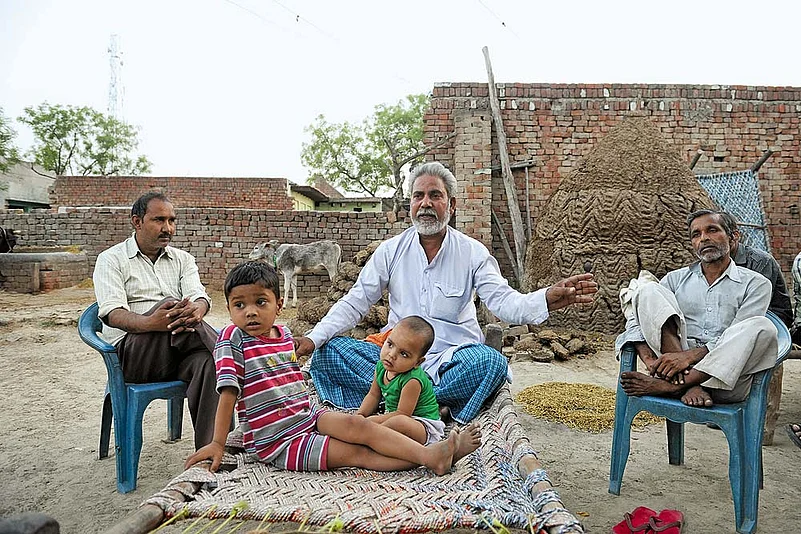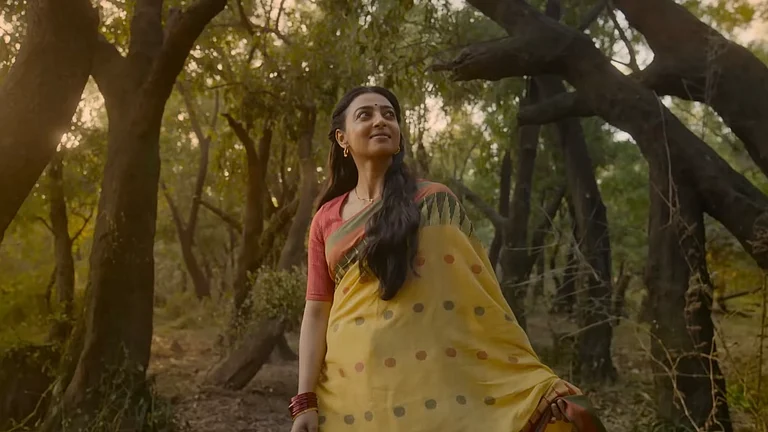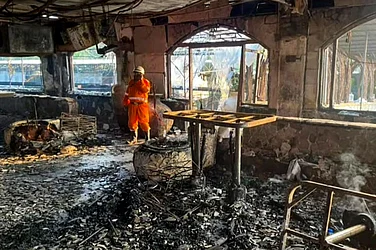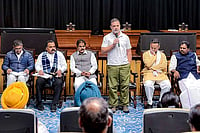- The project: Dadri power plant
- The issue: Return of the land
Bhola Singh, 73, is eager to know if the government will return the 10 bighas (2 acres) of his agriculture land in Dholana village, off NH-24 near Pilkhuwa town, part of the 2,500 acres acquired in 2004 for Anil Ambani’s Reliance Power to set up the 7,480 MW gas-fired Dadri power plant.
In September 2014, the Supreme Court ruled in favour of the affected farmers of seven villages and asked the government to give back their land after collecting back the compensation given. “I have deposited Rs 20,000. Whenever they return the land, I will repay the remaining Rs 8,00,480 compensation money I got,” says Bhola, even as neighbours warn him against being so frank. Unmindful, he directs us to Mangu Singh Rana, president of the Maharana Sangram Singh Kisan Kalyan Samiti, who along with hundreds of aggrieved farmers of Bhajera Khurd village had gone to court against the government action for using an urgency clause, and even acquiring their land on the basis of forged papers.
Having run from pillar to post trying to get back the ownership papers of his land and of over 500 others (for which no consent was taken nor compensation paid), Rana says, “This government, like the previous Mulayam Singh government, seems to have no plans to return our land deeds.”
Meanwhile, another 147 farmers who had got compensation have returned the money received. But the government has stopped that process too now. Out of the total land acquired, 1,500 acres is still in the name of Reliance Power though the project has been shelved as the court was informed.
“Only a part of my 30 bighas (6 acres) of land has been returned. The way officials, including UP chief secretary Alok Ranjan, are behaving makes us suspect this government’s intentions,” says Rana. No one is confident of getting back legal possession as the region is emerging as an industrial belt with several factories, training institutes operating within a stone’s throw.
Last month, the UP government notified a new land acquisition policy under which compensation for land acquired in rural areas is to be four times the circle rate, while in urban areas it will be two times.
Prof Sudhir Panwar, member, UP Planning Commission, says, “Farmers don’t generally oppose land acquisition provided they are given the right to negotiate and are assured of the right price and see benefits from development.” Panwar, who is also president of the Kisan Jagriti Manch, points to the 308-km highway stretch from Kannauj to Lucknow—almost 98 per cent land was acquired without problems though two lakh farmers were affected by the project.
Arvind Tyagi, 28, whose family land now falls on both sides of the Hapur bypass (after NHAI acquired the middle segment for the highway), isn’t so sure. Almost two decades later, Tyagi’s father is still awaiting better compensation from the CPWD and has gone in appeal together with a dozen other farmers against the Supreme Court verdict doubling his compensation to Rs 38 per square yard.
Conversely, Tyagi has no issues with having had to sell 12 bighas of land to a new colony that has been developed in the area as his family got Rs 800 per sq mts compensation. His father used the money to buy a mango orchard in Siyana village as labour costs are lower there.
By Lola Nayar in Pilkhuwa/Hapur


























